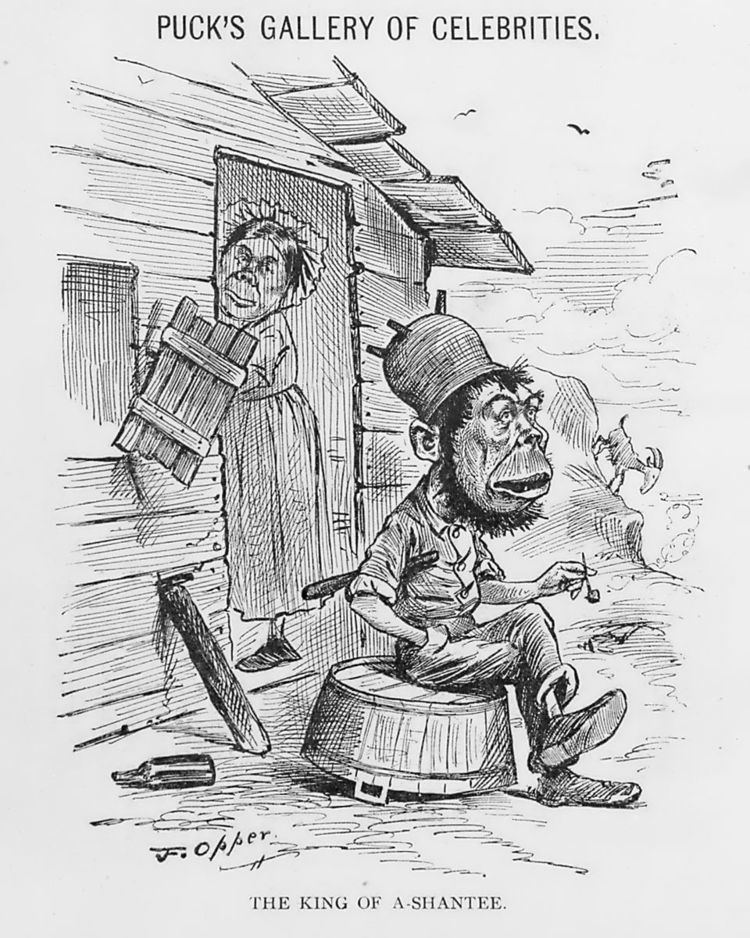 | ||
Lace curtain Irish and shanty Irish are terms that were commonly used in the 19th and 20th centuries to categorize Irish people, particularly Irish Americans, by social class. The "lace curtain Irish" were those who were well off, while the "shanty Irish" were the poor, who were presumed to live in shanties, or roughly-built cabins.
Contents
Neither term was complimentary. Aside from financial status, the term "lace curtain Irish" connoted pretentiousness and social climbing, while the "shanty Irish" were stereotyped as feckless and ignorant. As lace curtains became commonplace in Irish-American working-class homes, "lace curtain" was still used in a metaphorical, and often pejorative, sense. In the early 20th century, James Michael Curley, a famously populist Boston politician who was called "mayor of the poor", used the term "cut glass Irish" to mock the Irish-American middle class, but the term did not catch on.
Irish Americans who prospered or married well could go from "shanty Irish" to "lace curtain Irish", and wealthy socialites could have shanty Irish roots. John F. Kennedy, for example, is considered "lace curtain" even though his grandparents were poor immigrants.
Origin
The term "shanty" is of Gaelic origin, and many poor Irish tenant farmers lived in one-room cabins. "The Irishman's Shanty", a 19th-century comic song, describes a stereotypical Irishman's quarters:
He has three rooms in one, kitchen, bedroom, and hall,And his chist is three wooden pegs in the wall:Two suits of owld clothes make his wardrobe complete,One to wear in the shanty, that same for the street.In popular culture
The occasional malapropisms and left-footed social blunders of the upwardly mobile "lace curtain" Irish were gleefully lampooned in vaudeville, popular song, and comic strips such as Bringing Up Father, starring Maggie and Jiggs, which ran in daily newspapers for 87 years (1913 to 2000).
In James T Farrell's novel trilogy Studs Lonigan (1932–1935), which is set in an Irish-American Chicago neighborhood during the early twentieth century and the Great Depression, the father of Studs refers to their pompous neighbor Dennis Gorman as "Stickin' up his nose and actin' like he was high-brow, lace-curtain Irish." Other, usually derogatory, references are made to "lace-curtain Irish" throughout the novel, and at one point Studs is jokingly greeted by his friends as "Shanty Irish Lonigan."
In The Departed (2006), Staff Sergeant Dignam repeatedly points out the dichotomy between the lace curtain Irish lifestyle Billy Costigan enjoyed with his mother, and the shanty Irish lifestyle of Costigan's father.
"Lace curtain" Irish Americans were seen by some as betraying their Irish roots and currying favor with White Anglo Saxon Protestants. "To be genuinely Irish is to challenge WASP dominance," wrote California politician Tom Hayden. The depiction of the Irish in the films of John Ford was a counterpoint to WASP standards of rectitude. "The procession of rambunctious and feckless Celts through Ford's films, Irish and otherwise, was meant to cock a snoot at WASP or 'lace-curtain Irish' ideas of respectability."
